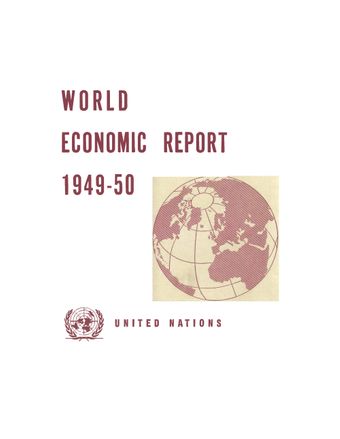- Home
- Books
- World Economic Report 1949–1950
- Chapter
The 1949 currency devaluations and international trade

- Author: United Nations
- Main Title: World Economic Report 1949–1950 , pp 167-197
- Publication Date: March 1950
- DOI: https://doi.org/10.18356/7ce99f60-en
- Language: English
The preceding chapter indicated that the dollar problem, which was the principal manifestation of international economic disequilibrium in the post-war period, had its origins in certain trends evident long before the Second World War; and that war-time and post-war developments reflected not merely the continuation of these trends, but the emergence of new sources of disequilibrium—some of them short-term in character, some of them of longer term. The short-term sources of disequilibrium were the dislocations of production and normal trading relations which occurred in the war-devastated economies, giving rise to heavy imports from other areas, particularly from the dollar area, in which supplies were more abundant than elsewhere. The longer term factors included the economic aims of countries in Europe and overseas for promoting further industrial expansion when the reconstruction or reconversion process had been completed; the high levels of investment activity which were required in the under-developed countries if standards of living were to rise; and the exceptional self-sufficiency of the United States in normal times. Under these conditions the demand for United States goods was likely to exceed the current dollar earnings of the rest of the world, even after the end of the reconstruction period.
-
From This Site
/content/books/9789210452786s005-c002dcterms_title,dcterms_subject,pub_keyword-contentType:Journal -contentType:Contributor -contentType:Concept -contentType:Institution105



